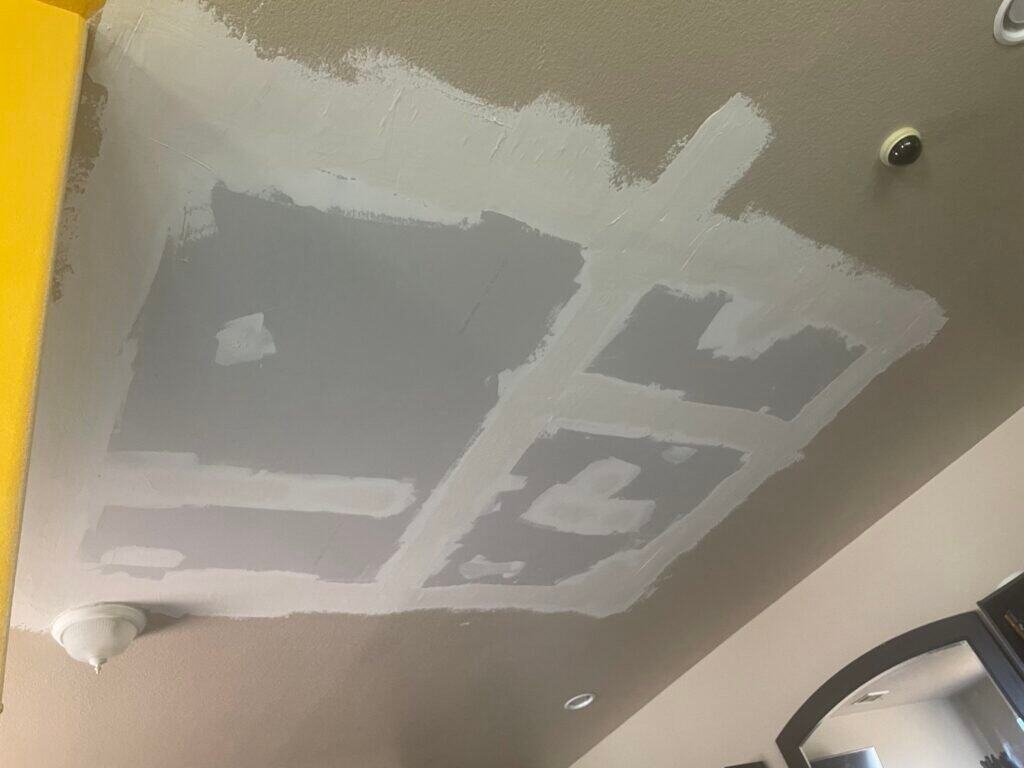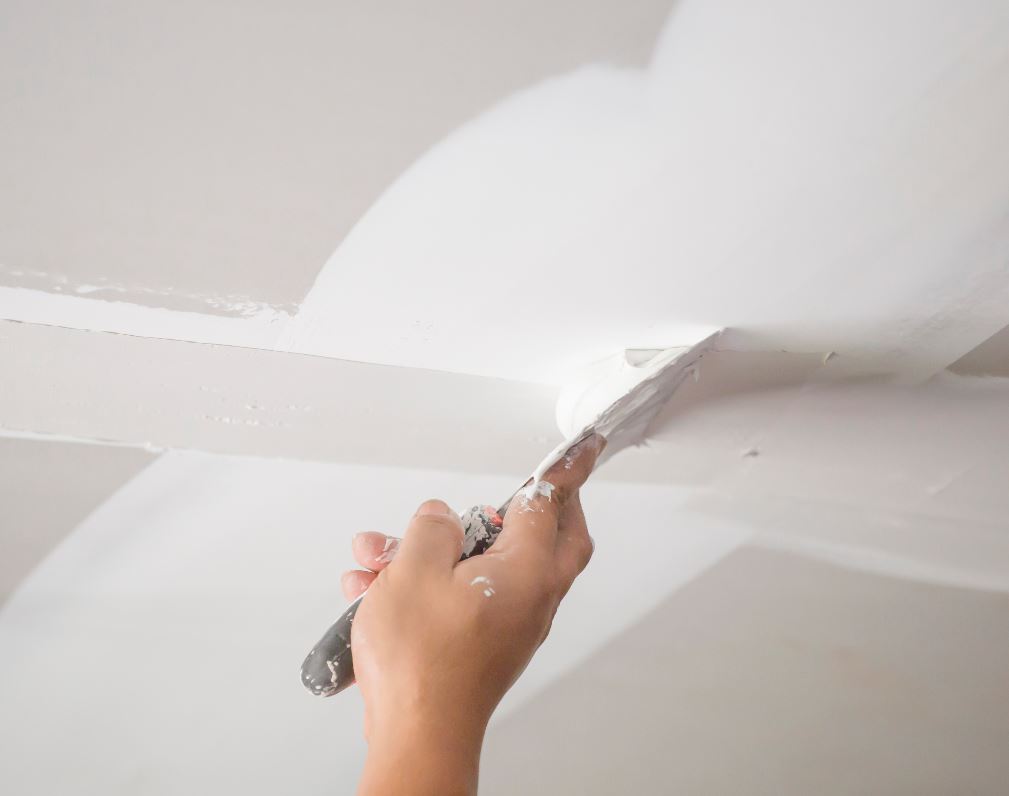A Comprehensive Overview to Mastering Drywall Repair and Installation
This overview supplies a detailed exploration of drywall repair and installment, accommodating both beginners and experienced experts. It outlines crucial tools, methods for patching and hanging sheets, and the essential finishing processes. drywall contractor. By recognizing common challenges, people can achieve refined results. Grasping these skills not just boosts one's home but likewise develops self-confidence in do it yourself undertakings. What fundamental tips will guarantee an effective project from beginning to complete?
Important Tools for Drywall Repair Work and Installation
When starting on drywall repair work and installation, a few necessary devices can substantially improve the effectiveness and quality of the job. A drywall blade, generally offered in different dimensions, is important for using joint compound and smoothing seams. A taping blade is additionally required for feathering edges and making sure a seamless surface. Additionally, a drywall saw or energy blade enables exact cutting of drywall sheets to fit any room.

Step-by-Step Overview to Patching Holes
Patching openings in drywall is an uncomplicated process that can bring back the wall surface's appearance and integrity. To begin, the area around the hole ought to be cleaned and any kind of loose particles got rid of. For small holes, a basic spackle or joint compound can be applied with a putty knife. Bigger holes may call for a spot; a piece of drywall can be cut to fit the hole, protected with glue or screws, and then taped around the edges. When the spot remains in area, joint substance is applied over the patch and feathery bent on blend with the bordering wall surface. After the compound dries, sanding is needed to attain a smooth surface. Lastly, the fixed area can be topped and repainted to match the remainder of the wall surface. This method assures a smooth repair, improving the general look of the drywall and keeping its architectural integrity.
Strategies for Hanging Drywall Sheets
After successfully fixing openings in drywall, the next step entails hanging brand-new drywall sheets to develop a seamless surface area. To attain this, one must begin by determining the wall surface space precisely and reducing the drywall sheets to fit. It is important to hang the sheets flat for far better architectural honesty, beginning from the top and working downwards.
Making use of a drywall lift can simplify the procedure, particularly for ceiling installments. Once placed, protecting the sheets with drywall screws at intervals of regarding 12 inches along the sides pop over to this web-site and 16 inches in the area is necessary. This guarantees a solid hold and decreases the risk of sagging. For corners, the sheets need to be cut to fit well, enabling cleaner joints. Ultimately, it is a good idea to surprise the joints between sheets to reinforce the overall framework, creating an extra resilient coating prepared for the following phase in the drywall installation procedure.
Ending Up Touches: Insulation and Mudding
Finishing the drywall setup includes the crucial steps of mudding and taping, which guarantee a smooth and sleek finish. Taping calls for the application of joint tape over the joints between drywall sheets. Interior Painting. This tape can be either paper or fiberglass harmonize, with each type offering special advantages. After taping, the next action is mudding, where joint substance, or "mud," is put on cover the tape and fill any kind of blemishes
Making use of a drywall knife, the compound ought to be spread evenly, making certain a feathery edge to decrease noticeable changes. Multiple coats are often required, with fining sand in between each layer to attain a smooth surface. Careful focus throughout this process is essential, as it greatly affects the final look of the wall surface. With the best strategy and persistence, the end result will be a perfect structure ready for paint or finishing touches.
Common Mistakes to Prevent in Drywall Projects

An additional typical error is not permitting sufficient drying time in between layers, which can catch dampness and compromise the coating. Disregarding to feather the edges appropriately can develop visible lines and blemishes. Ultimately, avoiding sanding or utilizing inappropriate strategies might leave harsh areas. By being conscious of these risks, people can greatly boost the top quality of their drywall projects and achieve a professional-looking surface.
Often Asked Questions
Can I Fix Drywall Without Professional Help?
Yes, one can repair drywall without professional help. With the right devices, products, and advice, people can successfully handle minor fixings. Significant damages may need specialist experience for optimal outcomes and durability.
The Length Of Time Does Drywall Compound Take to Dry?
Drywall substance usually takes in between 24 to 2 days to dry entirely, depending on aspects such as humidity and temperature. Thinner layers might dry out quicker, while thicker applications call for more time for optimal outcomes.
What's the Finest Sort Of Paint for Drywall?
The very best kind of paint for drywall is generally a water-based latex paint. It provides excellent protection, toughness, and look at this now ease of application, making it optimal for interior wall surfaces while enabling very easy clean-up with soap and water.

Just how Do I Protect Against Mold And Mildew on Drywall?
To stop mold and mildew on drywall, guarantee appropriate air flow, control humidity levels, make use of mold-resistant materials, and quickly attend to any type of leaks. webpage Normal examinations and prompt removal of water damage are additionally vital for lasting prevention.
Is Drywall Recyclable After Elimination?
Drywall is recyclable after elimination, gave it is devoid of pollutants like mold, paint, or other dangerous products. Reusing facilities can process it right into new items, promoting sustainability and minimizing land fill waste in building and construction.
When starting on drywall repair work and setup, a couple of crucial tools can greatly enhance the effectiveness and quality of the job. After efficiently fixing holes in drywall, the following action involves hanging new drywall sheets to produce a seamless surface. Finishing the drywall installation involves the essential actions of mudding and taping, which assure a smooth and refined surface. Attaining a polished coating in drywall projects can be difficult, and a number of common errors can weaken the high quality of the job. Yes, one can fix drywall without expert aid.